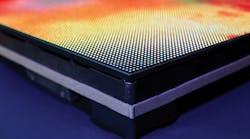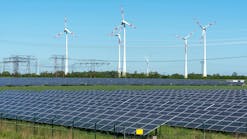It is almost the end of the year, and the holidays are approaching with all their benefits — Black Friday technology sales. Yep that’s right, the manufacturers are introducing all their new tech-toys just in time for holiday buying frenzy. The big box stores are bursting with their high-tech offerings. Web sites are getting ready to run hourly specials on every high-tech gizmo imaginable.
Several years ago, I wanted a large-screen high definition (2K-HD) TV. These gadgets had 1920 pixels horizontally x 1080 pixels vertically for better screen resolution. There was no contest with my old tube technology TV. I went to Big Box World and purchased one. It had a great picture, but a short time later, the 4K TV appeared.
If only I had waited, the 4K had 3840 x 2160 resolution. That’s about four times as many pixels as my recently purchased 2K-HD TV. This sounds like that old joke about electronics being obsolete as soon as you get them home. Unfortunately, that is only too true when it comes to most digital technologies.
Recently, I’ve been looking at the quantum dot 4K TVs. Afterall, the holiday sales and Internet specials are coming up. There is finally enough content available at 4K to make it worthwhile. But guess what I found? The 8K quantum dot TV is now in the marketplace! It supplies 7680 x 4320 screen resolution. That is about 16 times as many pixels as my 2K-HD TV.
One interesting fact I found in the spec-sheet said 8K has a total of 33 million pixels for its display. Thirty-three megapixels got me thinking. The next logical step is the 16K TV with about 48 megapixels. A quick search revealed human eyes are not rated in pixels, but if they were, then approximately 40 megapixels is their visual limitation. So, I’m guessing I’d be safe buying an 8K TV and not having it become obsolete quickly.
Next — Quantum Dot Windows
What makes this all relevant to the power delivery system? Glad you asked. It seems quantum dot technology is being used in renewable energy. Not only is it packing more punch in high performance TVs, it is also doing the same thing in photovoltaic (PV) applications. Technologically, quantum dots fall into the nanotechnological domain. Each quantum dot is about 10 nanometer or less in size, but their impact is enormous.
These little technological wonders have improved the performance of TV screens significantly and they are offering a great deal of possibilities in PV schemes. Scientists have been trying to improve the efficiencies of PV cells since they first started brewing the chemicals making up the PV panels, and quantum dot technology may be the answer.
The typical PV panel efficiency is about 15%. The really efficient PV panels have efficiency ratings of almost 23%. Researchers at the Los Alamos National Laboratory (LANL) and the National Renewable Energy Laboratory (NREL) have been experimenting with quantum dots to reduce the cost of solar power while improving its efficiency. It is estimated that the efficiency of quantum dot solar cells would be about two to three times that of conventional PV technology.
LANL is also talking about using quantum dot technology to turn windows into electricity generating PV panels. It’s called tandem luminescent sunlight collector. In simple terms, they use two types of quantum dots layers inside a double pane solar window that generates electricity. It does this with greater efficiency and also provides insulation and shading. From what I have read, this process is in its early development, but the possibilities are fascinating.
I was amazed with the rooftop technologies like the solar roof tiles from Tesla and the integrated solar cell roof from Midsummer reported on here previously, but imagine a skyscraper clad in double pane quantum dot solar window technology. Solar windows could generate all the power needed by the building while keeping the building cool. Combining quantum dot windows with energy storage and the resultant system would be a game changer for distributed energy resources technology.
In addition to the quantum dot windows, there are researchers experimenting with spray on solar paint. It isn’t very efficient today, but that changes every day. There is also research in printed solar cells. Like the paint, quantum dots can be infused in the ink. It sounds like science fiction today, but quantum dot nanotechnology could be a real game changer for DER (distributed energy resources) systems. Interesting times ahead.


